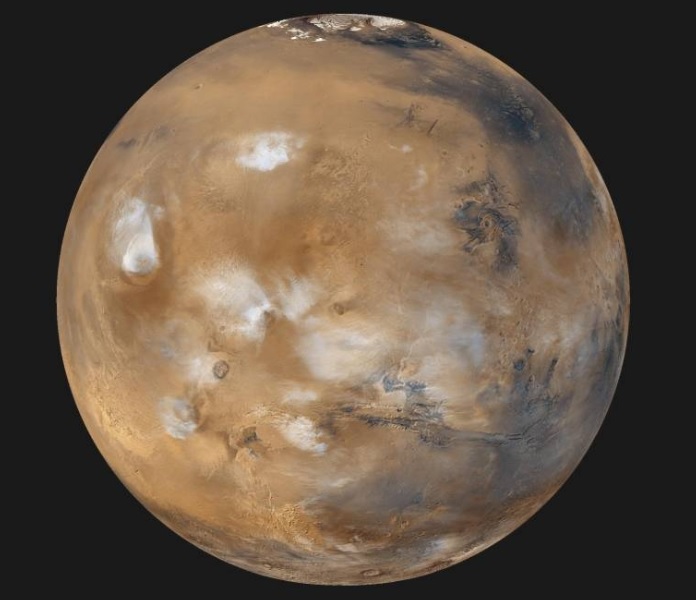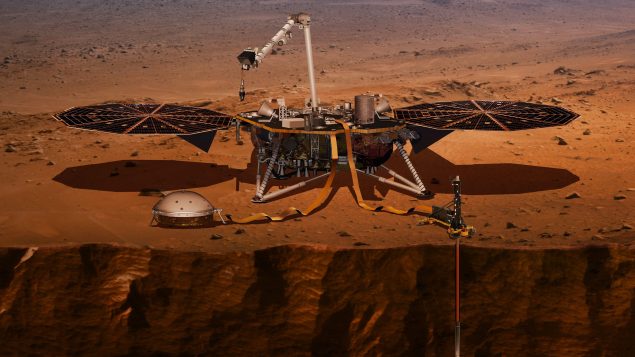There have been several spacecraft sent to study Mars but NASA is hoping to launch the first to look at the planet’s interior on May 5, 2018. InSight, as it is called, will take six months to reach Mars and it will remain stationary on the planet’s surface.
It will “peer deep beneath the Martian surface, studying the planet’s interior by measuring its heat output and listening for marsquakes, which are seismic events similar to earthquakes on Earth,” reads the NASA website.

It’s hoped information about seismic waves generated by marsquakes will help develop a map of Mars’ interior. (NASA/JPL-Caltech/MSSS)
‘You need to get really deep’
“If you are really interested in the entire planet of Mars and its whole history—how it formed, how it’s evolved through time—you need to get really deep,” says Jesse Rogerson, astrophysicist and science advisor to the Canada Aviation and Space Museum.
“You need to get deep…and understand the real internal structure. Otherwise, you don’t have a complete picture of the planet and you don’t know how it fits into the solar system,” says Jesse Rogerson, astrophysicist and science advisor to the Canada Aviation and Space Museum.

Astrophysicist Jesse Rogerson says information collected by InSight will help us understand how Mars fits in the solar system. (Pierre Martin)
A hope for insight into Earth, other planets
NASA’s stated goal is to use seismic waves generated by marsquakes to develop a map of the planet’s interior. This would help scientists better understand how other rocky planets, including Earth, were and are created.
On the same rocket, there will be two mini-spacecraft that will orbit Mars. These are smaller than usual at about the size of a backpack. Rogerson says NASA wants to “basically see if we here on Earth can still communicate with them with a miniature communication device. And if they can…it will help us build smaller, better, cheaper satellites to go to other planets.”







For reasons beyond our control, and for an undetermined period of time, our comment section is now closed. However, our social networks remain open to your contributions.